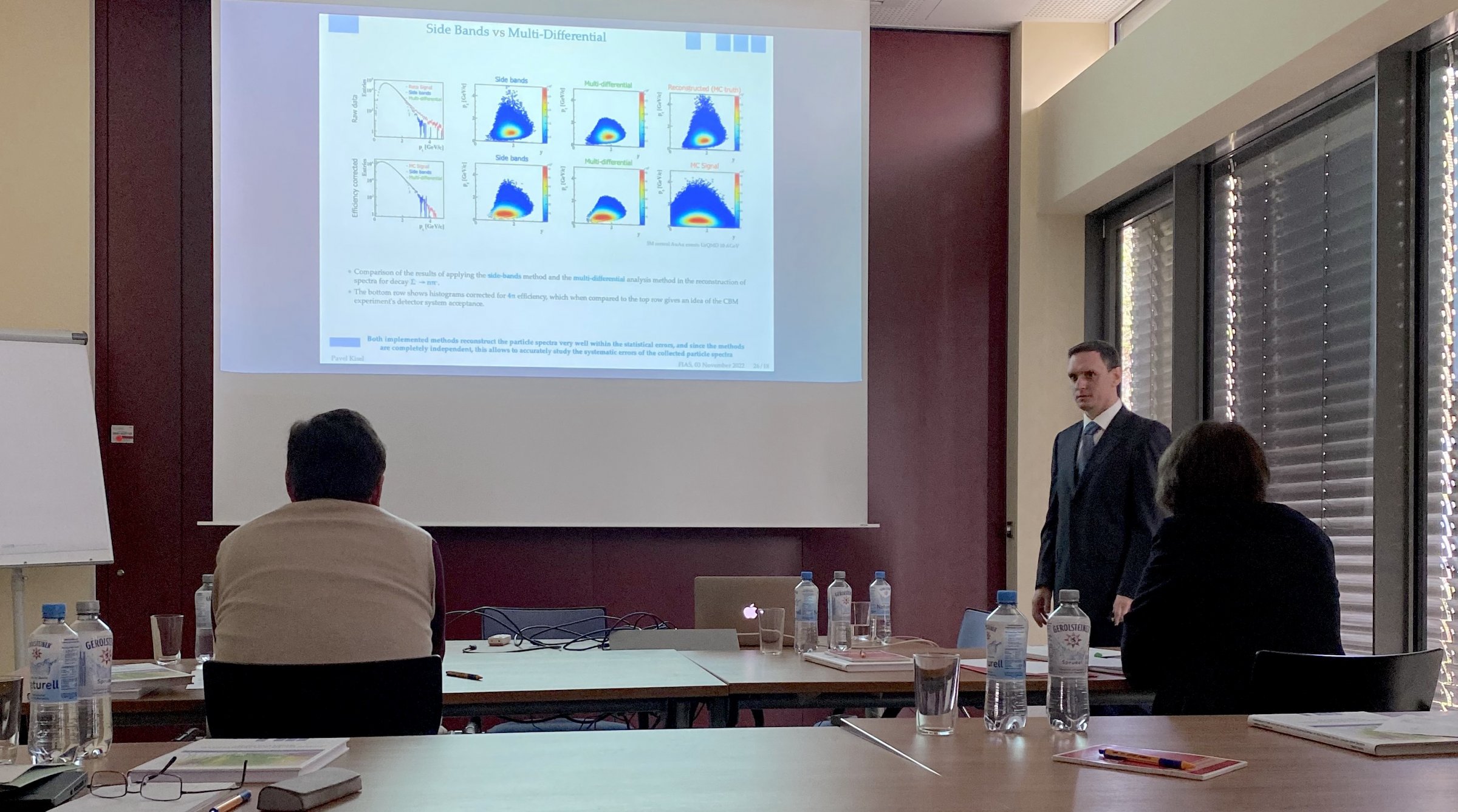November 3, 2022
Congratulations to Pavel Kisel on his doctorate!
Pavel Kisel from Ivan Kisel's research group defended his thesis on Nov 3rd. In his doctorate, he studied "strange particles".
At present the new-generation heavy ion CBM experiment is being prepared at the FAIR accelerator facility in Darmstadt. Gold nuclei of the beam will collide with gold nuclei of the target at relatively low energies, but will create very high baryonic densities inside the colliding nuclei. Such a highly compressed state of matter is expected to correspond to the state of matter at the center of neutron stars, i.e., at the last stage of evolution of heavy stars before they turn into black holes.
In order to accurately study such processes, it is necessary not only to build a unique experimental setup, but also to create mathematically precise algorithms for studying these rare physical processes. For these purposes at FIAS a software package of fast algorithms FLES (First Level Event Selection) has been created, including necessary algorithms.
Development of one of the modules of the FLES package was the topic of Pavel Kisel's dissertation, „KF Particle Finder: Missing Mass Method for reconstruction of strange particles in CBM (FAIR) and STAR (BNL) experiments“. Strange particles were named so immediately after their discovery because they had some strange properties. For example, they were always born in pairs, such as the kaon 𝝟 was born together with the lambda 𝝠, although they are not a particle and antiparticle. Also their lifetimes were quite long. The explanation for this was the presence of a strange quark s in their structure, which was discovered later.
Strange particles play an important role as so-called signal particles in the study of the properties of quark-gluon plasma, which can be formed in relativistic collisions of heavy ions. And since their lifetime is long enough, they can be registered in the detector system of the experiment before they decay. For example, the strange particle sigma 𝝨- decays into a pion 𝝿- and a neutron n particles. In this case, sigma 𝝨- itself and its daughter charged particle pion 𝝿- can be registered in the detector, and their trajectory parameters can be calculated by algorithms for processing experimental data. Using the laws of conservation of energy and momentum one can also determine the parameters of the neutral particle, including its so-called missing mass in this decay. Following then the hypothesis that the neutral particle is neutron n, one can redefine more precisely both the parameters and the type of the decayed strange particle, in this case sigma 𝝨-.
Thus, the missing mass method is actually the only way to find the strange sigma minus particle, since it decays to pion minus and neutron in 99.8% of cases. The missing mass method also extends the ability to find and reconstruct other strange particles as well, similar to what is done for sigma 𝝨-.
Despite the simplicity of the formulation, the implementation of the missing mass method requires the use of quite complex Kalman filter mathematics to accurately estimate the parameters of all particles involved based on experimental measurements. Also, in order to work fast in real time, all algorithms make maximum use of the capabilities of modern many-core computer architectures.
The missing mass method was originally developed for the CBM experiment, repeatedly tested on simulated experimental data, and then successfully applied to real data of the STAR experiment, demonstrating its reliability and high efficiency. In the future, the use of the missing mass method is also possible in other experiments, in particular, in the ALICE experiment.
